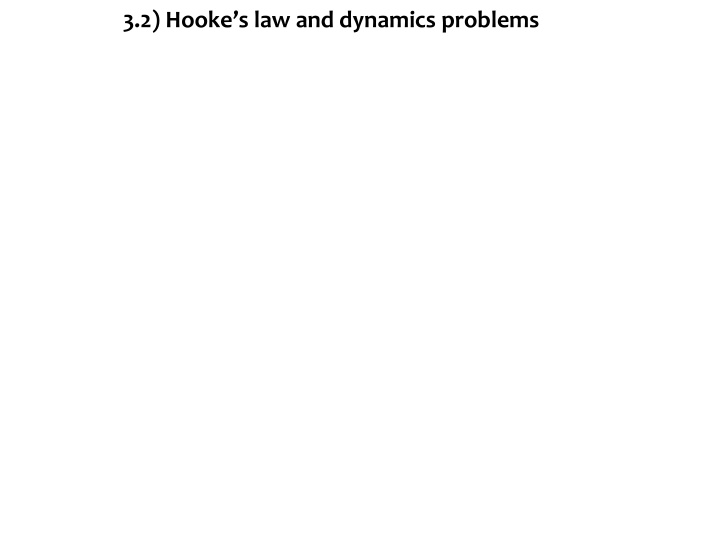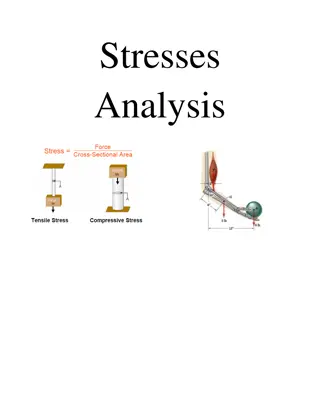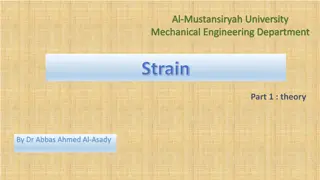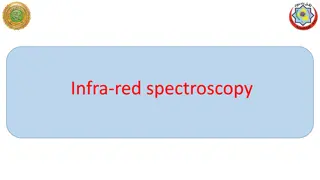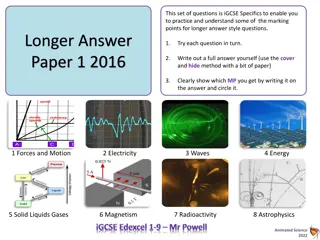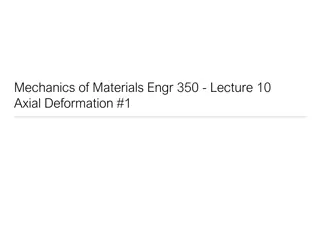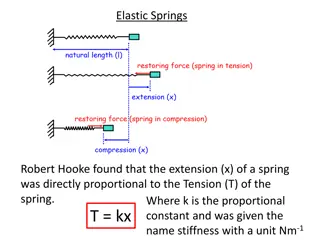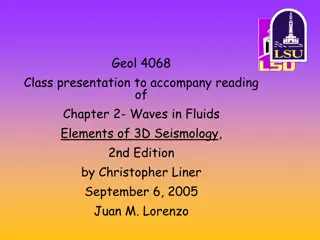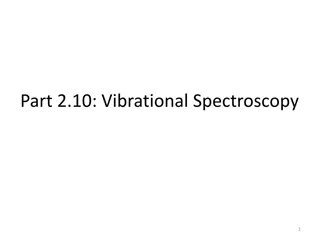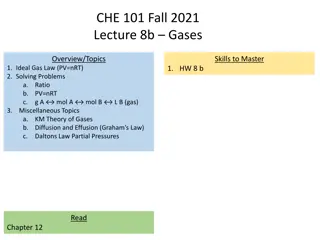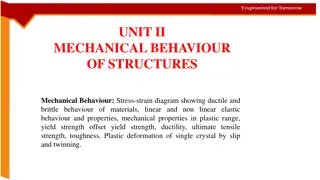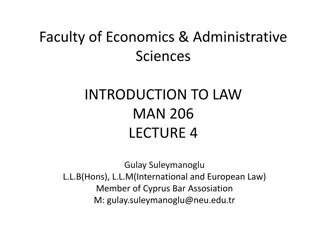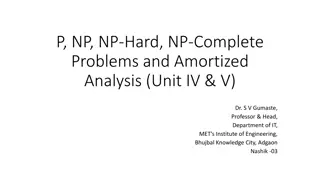3.2) Hooke’s law and dynamics problems
In this set of problems, we explore scenarios involving Hooke's Law and dynamics, focusing on situations where elastic strings are attached to particles of varying masses. Through calculations and analysis, we determine accelerations and string lengths at critical points to understand the dynamics of these systems.
Download Presentation

Please find below an Image/Link to download the presentation.
The content on the website is provided AS IS for your information and personal use only. It may not be sold, licensed, or shared on other websites without obtaining consent from the author.If you encounter any issues during the download, it is possible that the publisher has removed the file from their server.
You are allowed to download the files provided on this website for personal or commercial use, subject to the condition that they are used lawfully. All files are the property of their respective owners.
The content on the website is provided AS IS for your information and personal use only. It may not be sold, licensed, or shared on other websites without obtaining consent from the author.
E N D
Presentation Transcript
Your turn Worked example One end of a light elastic string, of natural length 0.5m and modulus of elasticity 20N, is attached to a fixed point A. The other end is attached to a particle of mass 2kg. The particle is held at a point which is 1.5m below A and released from rest. Find: a) The initial acceleration of the particle b) The length of the string when the particle reaches its maximum speed. One end of a light elastic string, of natural length 1m and modulus of elasticity 40N, is attached to a fixed point A. The other end is attached to a particle of mass 4kg. The particle is held at a point which is 3m below A and released from rest. Find: a) The initial acceleration of the particle b) The length of the string when the particle reaches its maximum speed. a) 10.2 ?? 2 b) 0.99 ?
Your turn Worked example A particle of mass 0.5 ?? is attached to one end of a light elastic spring of natural length 1.5 ? and modulus of elasticity 19.6 ?. The other end of the spring is attached to a fixed point O on a rough plane inclined to the horizontal at an angle ?, where tan? =3 The coefficient of friction between the particle and the plane is 0.2. The particle is held at rest on the plane at a point which is 1 ? from O down a line of greatest slope of the plane. The particle is released from rest and moves down the slope. Find its initial acceleration. A particle of mass 1 ?? is attached to one end of a light elastic spring of natural length 3 ? and modulus of elasticity 39.2 ?. The other end of the spring is attached to a fixed point O on a rough plane inclined to the horizontal at an angle ?, where tan? = The coefficient of friction between the particle and the plane is 0.4. The particle is held at rest on the plane at a point which is 2 ? from O down a line of greatest slope of the plane. The particle is released from rest and moves down the slope. Find its initial acceleration. 5 12. 4. 17.4 ?? 2 (3 sf)
Your turn Worked example A particle P of mass 1.5 kg is attached to the mid- point of a light elastic string of natural length 0.30 m and modulus of elasticity ? newtons. The ends of the string are attached to two fixed points A and B, where AB is horizontal and AB = 0.48 m. Initially P is held at rest at the mid-point, M, of the line AB and the tension in the string is 240 N. a) Find The particle is now held at rest at the point C, which is 0.07 m vertically below M. The particle is released from rest at C. b) Find the magnitude of the initial acceleration of P a)? = 400 b) 89.8 ?? 2 (3 sf) A particle P of mass 3 kg is attached to the mid- point of a light elastic string of natural length 0.60 m and modulus of elasticity newtons. The ends of the string are attached to two fixed points A and B, where AB is horizontal and AB = 0.96 m. Initially P is held at rest at the mid-point, M, of the line AB and the tension in the string is 480 N. a) Find The particle is now held at rest at the point C, which is 0.14 m vertically below M. The particle is released from rest at C. b) Find the magnitude of the initial acceleration of P
